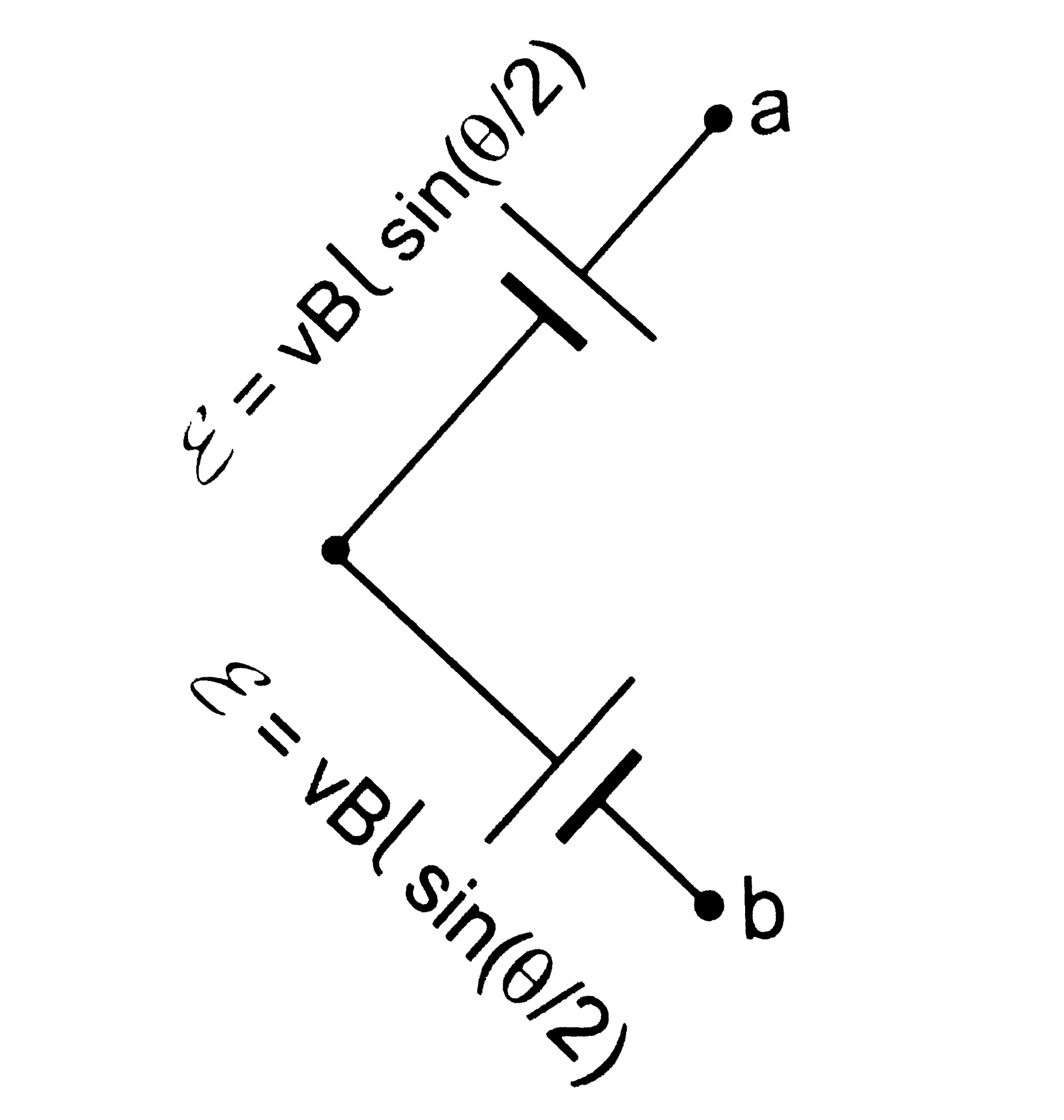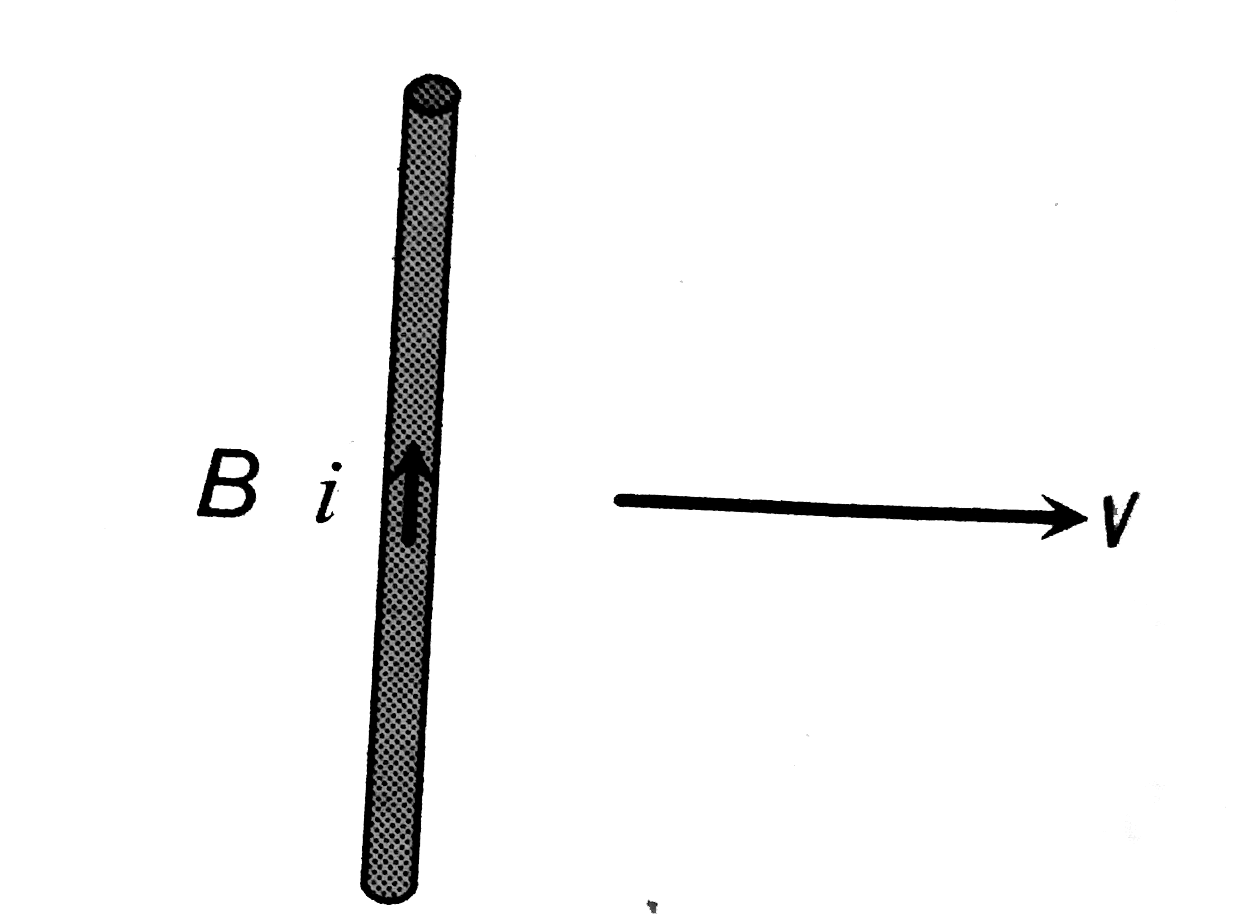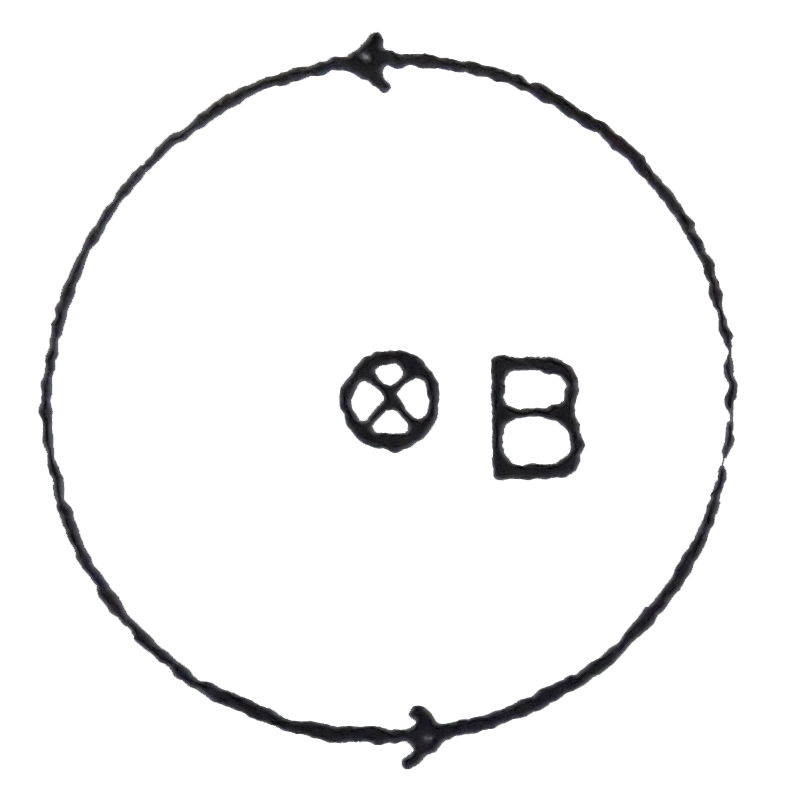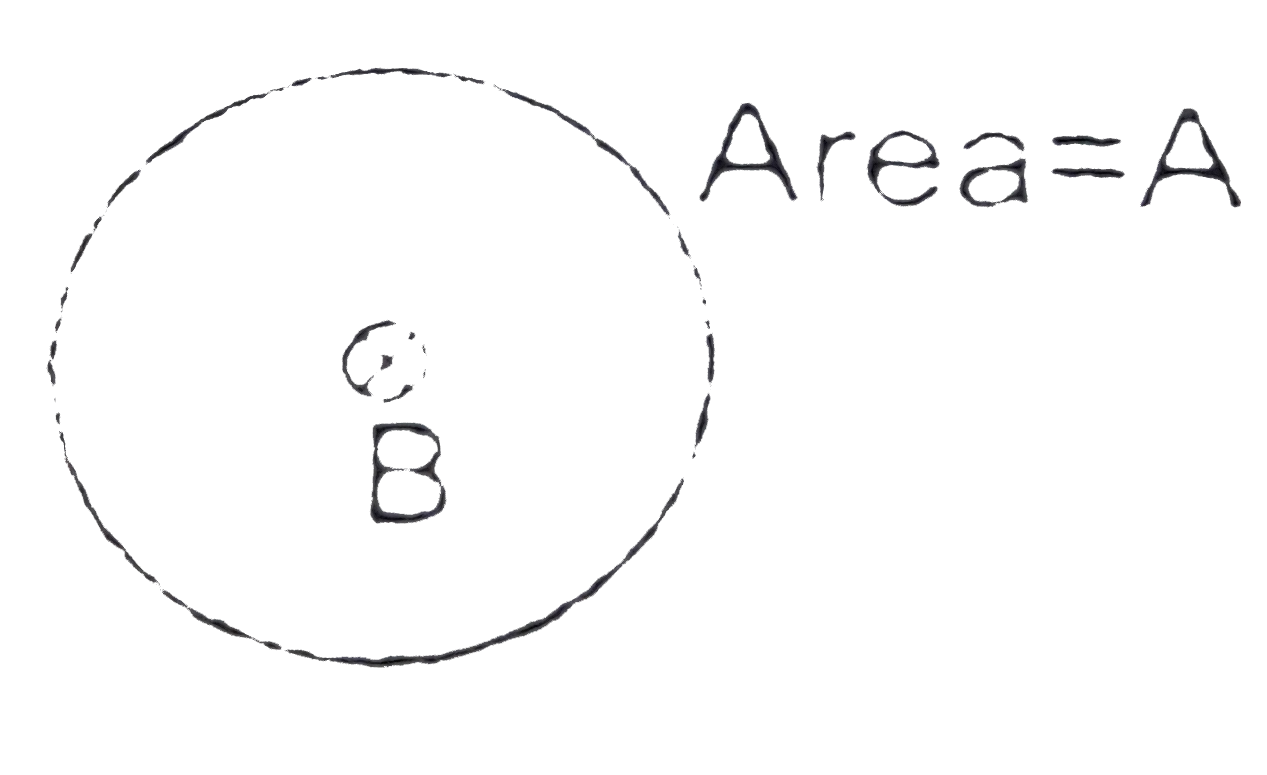An angle aob made of a conducting wire moves along its bisector through a magnetic field B as suggested by figure. Find the emf induced between the two free ends if the magnetic field is perpendicular ot the plane of the angle.


Video Solution
Text Solution
Consider the cirucit as being closed externally, as shown in the figure
Fi ad =x , the area of the rectangular part abcd is A = 2xl sin(theta/2)
As the angle moves towards right, the flux of the magnetic field through this rectangular area decreases at the rate dΦdt=BdAdt=2Blvsin(θ2)
This is also the rate of decrease of the flux through the closed circuit shown in the figure
so the induced emf is ε=2Blvsin(θ2)
as the emf is induced solely because of the movement of the angle, this is the emf induced between its ends
|
Topper's Solved these Questions
- ELECTROMAGNETIC INDUCTIONBOOK - HC VERMACHAPTER - ELECTROMAGNETIC INDUCTIONEXERCISE - Short Answer
13 Videos
- ELECTROMAGNETIC INDUCTIONBOOK - HC VERMACHAPTER - ELECTROMAGNETIC INDUCTIONEXERCISE - Objective 1
12 Videos
- ELECTROMAGNETIC INDUCTIONBOOK - HC VERMACHAPTER - ELECTROMAGNETIC INDUCTIONEXERCISE - EXERCISE
9 Videos
- ELECTRIC FIELD AND POTENTIALBOOK - HC VERMACHAPTER - ELECTRIC FIELD AND POTENTIALEXERCISE - Exercises
75 Videos
- ELECTROMAGNETIC WAVESBOOK - HC VERMACHAPTER - ELECTROMAGNETIC WAVESEXERCISE - Exercises
9 Videos
Similar Questions
Knowledge Check
A wire moves with a velocity ''v'' through a magnetic field and experiences an induced charge sepration as shown. Then the direction of the magnetic field is
 Ain to the pageBout of the pageCtowards the bottom of the pageDtowards the top of the page
Ain to the pageBout of the pageCtowards the bottom of the pageDtowards the top of the pageA conducting wire is moving towards right in a magnetic field B. The direction of induced current in the wire is shown in the figure. The direction of magnetic field will be
 AIn the plane of paper pointing towards rightBIn the plane of paper pointing towards leftCperpendicular to the plane of paper and downwardsDperpendicular to the plane of paper and upwards
AIn the plane of paper pointing towards rightBIn the plane of paper pointing towards leftCperpendicular to the plane of paper and downwardsDperpendicular to the plane of paper and upwardsA charged particle moves through a magnetic field perpendicular to its direction. Then
Akinetic energy changes but the momentum is constantBthe momentum changes but the kinetic energy is constantCboth momentum and kinetic energy of the particle are not constantDboth momentum and kinetic energy of the particle are constant
Find the direction of induced current in the coil shown in figure.Magnetic field is perpendicular to the plane of coil and it is increasing with time.

View SolutionA rod of length l is moving velocity v "in magnetic field" b as seen in . Find the emf induced in all three cases.
(a)
View SolutionA charge is moving through a magnetic field. The force acting on the charge is maximum when the angle between the velocity of charge and the magnetic field is _______
View SolutionWill any emf be induced between the ends of a vertical magnetic pole falling through the plane of magnetic meridian?
View SolutionA charged particle moves through a magnetic field perpendicular to its direction. Then
View Solution


